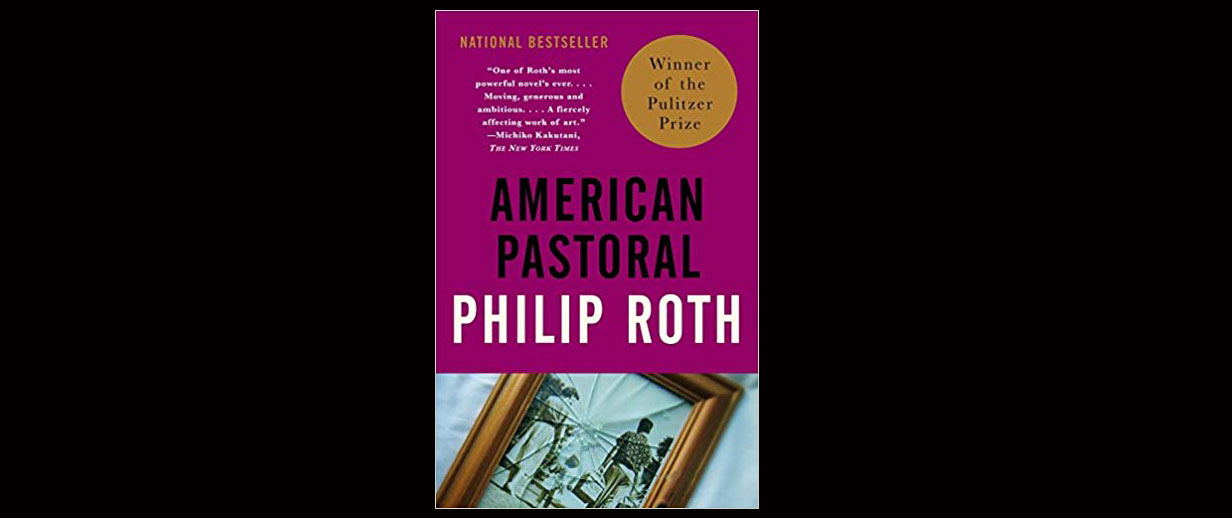Philip Roth’s “American Pastoral” presents a compelling narrative steeped in the complexity of the American experience, one that resonates deeply with the zeitgeist of the late 20th century. With an earnest exploration of the American Dream, Roth ventures into the myriad contradictions this dream encapsulates. But does it still hold the same allure in a contemporary context fraught with cultural upheaval and disillusionment? This playful inquiry beckons us to delve into the intricacies that Roth masterfully weaves throughout his poignant prose.
At the heart of “American Pastoral” lies Seymour “Swede” Levov, a quintessential American hero—a man molded by his surroundings yet ultimately undone by them. Roth paints Swede as the embodiment of the ideal: a successful businessman, a devoted husband to the enchanting Dawn, and a loving father to Merry, their daughter. Yet, as the plot unfolds, Swede’s life transforms into a poignant tableau of despair, exposing the fragility that lurks beneath the surface of a seemingly idyllic existence. The emergence of Swede’s daughter as a radical activist and her subsequent act of terrorism casts a shadow over his life, challenging the notion of an unassailable American prosperity.
This narrative pivot raises an arresting question: Can one meticulously curate a life of perfection in a world where chaos and unexpected tribulations reign? Roth approaches this philosophical quandary with a deft hand, employing an analytical lens to scrutinize the interplay between individual aspirations and societal expectations. In doing so, he poses a challenge to the reader: to reckon with their understanding of success and the price at which it may come.
Roth’s characterization is nothing short of remarkable. Swede’s internal struggles offer a window into the human psyche, revealing the fractures that exist even within the most polished façades. His existential malaise encapsulates a universal truth: the pursuit of the American Dream is fraught with complexities that extend beyond mere personal attainment. We observe how Swede’s fixation on the dreams of an idyllic life renders him vulnerable to the specters of disappointment, raising yet another nuanced question—what happens when one’s aspirations become misaligned with reality?
Swede’s narrative journey serves as an allegorical critique of post-war American life, where the promise of prosperity often masks underlying societal turmoil. Merry’s radicalization emerges as a stark reflection of the discontent simmering beneath the surface of American society during the tumultuous 1960s. Through Merry, Roth interrogates the more sinister aspects of American identity, unveiling the disconnect between the dream and the lived experience. She becomes a symbol of rebellion, challenging the conventional values that Swede epitomizes, ultimately leading to a collision that irrevocably alters their family dynamic.
Roth’s keen observation of social landscapes invites readers to navigate the murky waters of cultural identity and disillusionment. Through the lens of Swede’s life, readers are compelled to consider the implications of external socio-political forces on personal lives, challenging the notion that one can remain untouched by societal upheaval. The author’s ability to articulate this tension is one of the hallmarks of his literary prowess, urging readers to look beyond the superficial allure of success.
The narrative structure of “American Pastoral” deftly mimics the spiraling nature of Swede’s internal conflict. Roth’s prose flows with a lyrical quality, shifting between reflective passages and chaotic bursts of dialogue that echo the tumult of Swede’s emotional landscape. This stylistic choice enhances the reader’s immersion, creating a visceral experience that mirrors Swede’s own disarray. Each chapter unfolds layers of introspection, forcing the reader to grapple with their understanding of identity and morality within the confines of American culture.
The overarching theme of disillusionment resonates powerfully in today’s world, prompting readers to confront their interpretations of success and fulfillment. As Swede navigates his crises, he becomes a lens through which we examine the cultural values we hold dear. Are they, too, susceptible to the ravages of societal change? Roth’s analysis of the American Dream, through Swede’s lens, evokes an irrefutable challenge to the reader: to redefine what it means to be “successful” in a climate where traditional metrics are constantly in flux.
Ultimately, “American Pastoral” is not merely a story about one man’s unraveling but emerges as a profound commentary on the American condition. Roth implores us to question the very fabric of our aspirations. Are we navigating our lives with authenticity, or are we merely playing roles dictated by societal norms? Through Swede’s journey, readers are encouraged to engage with these broader existential dilemmas, challenging preconceived notions of identity, success, and happiness.
In conclusion, Philip Roth’s “American Pastoral” serves as a timeless exploration of aspiration, disillusionment, and the intricate web of personal and political identity. As readers traverse the complexities of Swede’s existence, they are invited to reflect on their own lives and the challenges that arise when dreams clash with reality. Is it possible to reconcile the vision of an idyllic past with the undeniable chaos of the present? Roth’s profound work leaves us pondering this question, ensuring its relevance across generations.
